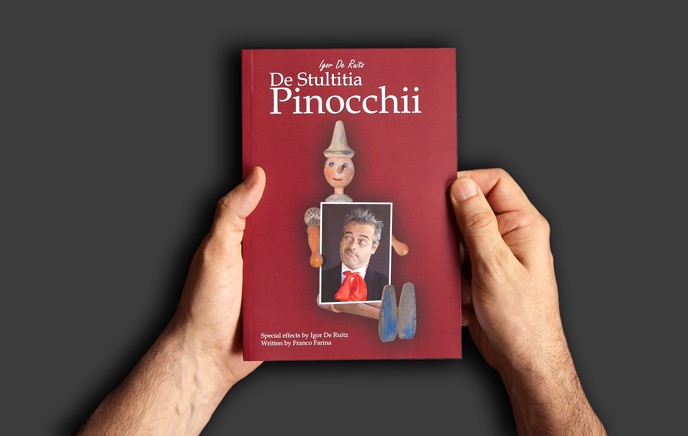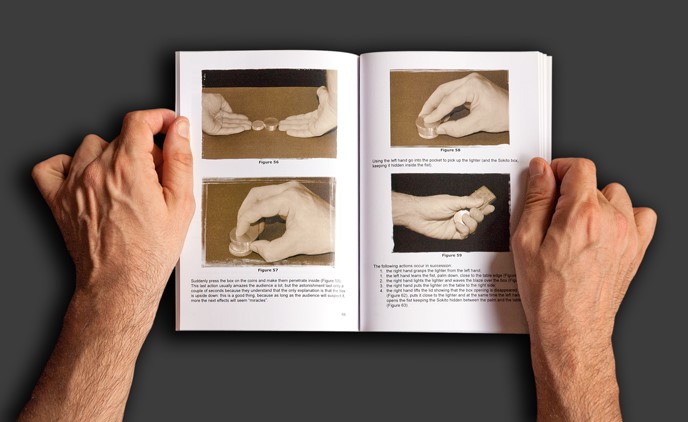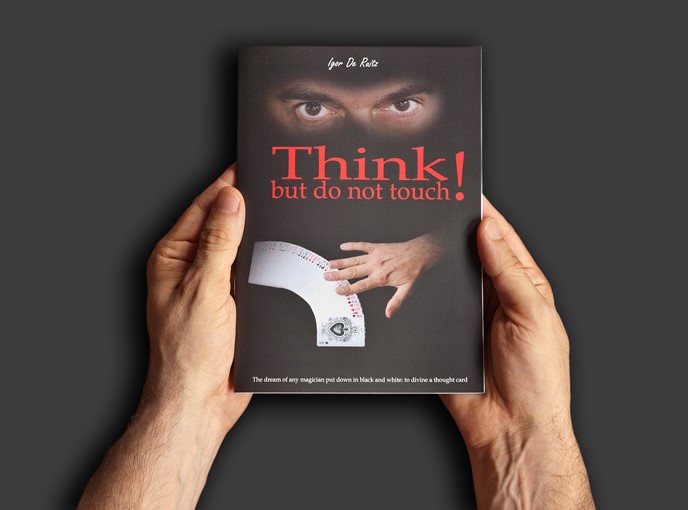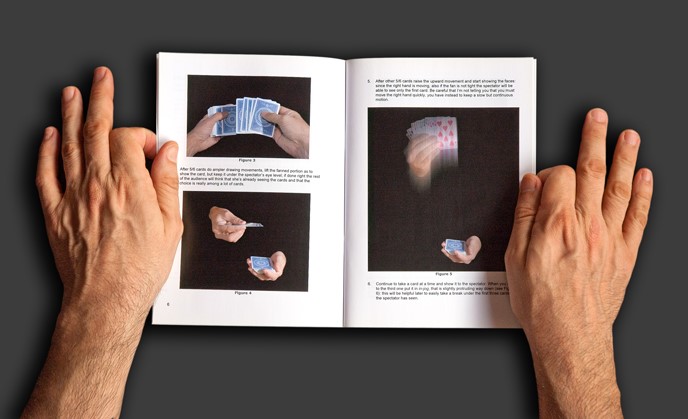De Stultitia Pinocchii
The effect I'm going to present you is the junction point of two artistic
passions that I have cultivated for years, maintaining them intentionally
separated, until I have thought that they were both arrived to the maturity
necessary in order to benefit equally one of the other: I’m referring to the
magic passion and to the theatre one.
I think important to have waited for the right moment before trying to find the
point of contact between the two worlds, although for both fundamentally is a
matter of exhibitions with the artist on a stage and the spectators seated in
the stalls, unfortunately it is unknown why the education of the two guys
follows two completely different paths. The actor exercises himself for years on
texts interpretation, studying the voice and mime to not leaving unused any
communication way; the reason is that he soon understands that if he only leaves
to the voice the job of interpreting a text, he would declaim and not recite.
The audience is captured using a much more complex machine: the actor explores
the whole emotional sphere and uses all his body to visualize the text, also
using unusual ways... if you have attended the Orazio Costa actor school you
know what I mean, probably you have recited very strange things, as a peach that
goes bad or a thunderstorm (there’re are people that go to the mental hospital
for much less). And it’s not all, the actor understands that he’s only one of
the elements of a show, that to function it needs many indispensable figures,
for example a playwright, a director, a set designer, a costume designer,
etc.

While the actor develops himself on a 360 degrees basis, the magician instead
does exactly the contrary, that is he concentrates himself on a unique aspect,
the magic technique. Probably fascinated by the astonishment that he proves when
he assists to magic tricks performed by others, he ardently desires to know the
secrets and the technique to be able to replicate them. After years of study and
application he surely accomplishes to excel in technique, but also he
understands, usually too late, that the only emotion he’s able to donate to his
public is precisely the only one he has devoted himself on, that is the
astonishment. He accomplishes to have what I call “the jokes teller syndrome”,
he becomes as those people very capable to tell funny stories, but that are not
able to understand when it is the moment to stop, they’re very funny for the
first minutes, but after a while they become almost unbearable. The reason is
that the people, if emotionally stimulated in a monothematic way, soon they get
accustomed and find boring the same thing that a couple of minutes before they
have found wonderful.
Surely there’s who studies mostly the tricks psychology, but it is not what I’m
talking about, in fact these are subtleties that have always the only purpose to
amplify the same thing, the astonishment.
Can the magician change himself, evolving to a real entertainment form,
abandoning what it has been before only a narcissistic form of dexterity?
Fortunately the answer is yes, but it is necessary a re-education from the
ground, a sacrifice that usually, after a magic pluriennial apprenticeship, very
few magician are disposed to do.
Paradoxically, I had the lucky to be educated to the show business by people
that have never met each other, by magic masters (that have reproved me if I was
not a perfect manipulator) and by theatre professionals (that have expanded my
narrow recitation vision), both indispensable. The routine included in this book
is the eagerly awaited point of arrival, the bride after a long engagement and
celebrates the birth of a style that I have carried forward during the following
years.
I hope to be an inspiration for the magic friends, in the same way others have
inspired me; if the effect will be only to rouse someone's interest, this would
be very gratifying to me, because it’s from our doubts that great discoveries
can rise.
To who is asking himself what have in common close-up magic and theatre, I
answer that also your mat is a stage, with same rules as the bigger brother: the
objects have to be correctly arranged so that they don’t get in each other's
way, the movements have to be clear and logical, all has to have a dramatistic
coherence in your presentation and at last there has to be a direction that
binds all these features together.
I dare to say that from an architectural point of view your mat is like a big
stage, it has a backdrop and a proscenium and on it the spectator comes up (puts
the hands) only if invited.
The most important thing of all these words, the only thing that matters to
me that you keep in memory, is that your hands are not the ones that recite but
you are, by all your body: do not limit yourself moving your appendixes with
grace and dexterity, use your voice to interpret, use all the body in a creative
way, the face, the arms, the shoulders and even your legs, also if they’re
hidden behind the table.
Frequently it is heard during magic lectures “Be yourself!”; this sentence is
quite imprecise, in fact many big actors in the real life are boring or even
nasty, while on the stage they have a great success interpreting completely
different characters from what they really are. The secret is to look inside us
for our original emotions, the ones the we have felt, even the suppressed ones
by inhibitions from the early childhood and bring them to light again; let me
therefore correct the previous warning with the more correct one: “Be a
character, everyone you want, but through yourself!”, because, if you have not
been in coma from your birth date, believe me, inside everybody of us there’re
the “books” on how to be a great actor.

Think but do not touch!
After years of study of this effect and after innumerable requests from many
magic friends, I’m going to explain this effect that for me is a warhorse and I
use it as a final for every close-up routine. The trick comes from the Dai
Vernon’s idea, that consists in making a spectator to
mentally choose one card and then deduct it. From the original trick I
only kept the stacking idea that however is performed now using totally
different techniques.

To those that will say that this is a mental magic effect, I answer that
presenting it as an intriguing experience with the cards, it is an optimal
conclusion for a close-up routine. To those that will say that is risky, I
answer do not be fooled by appearances, nothing is left to the case or luck;
however if this keeps you still, it can be presented like an experiment, so if
anything goes wrong, you have always the chance to say that there’s always a
failure likelihood: really the only risk factor comes from the involved
spectator, in fact, since the card is only thought, she’s the only one that
could ruin the final effect. Definitely, if you’re the kind of magician that
wants all the chosen cards signed, so that the spectators cannot disown them,
than this trick is not for you. In this effect the channel that is established
with the spectator is an intimate trust and around her all the incredible plot
is developed.
Finally, to those that will say that this effect is difficult to perform, I
answer You’re right! But the difficulty is not in technique (very little), it is
all in the presentation and this time is not one of the stock phrases that you
usually listen at magic lectures, this time is really true, if you’re a clever
communicator you’re going to perform a miracle, if you’re an excellent and mute
executor probably you’ll get most from an aces production.

Did you like the development of this project?
Come to see all the images on Behance clicking on the button here below!
If you decide then to submit your appreciation to the project, you'll help us to to spread it over the network.